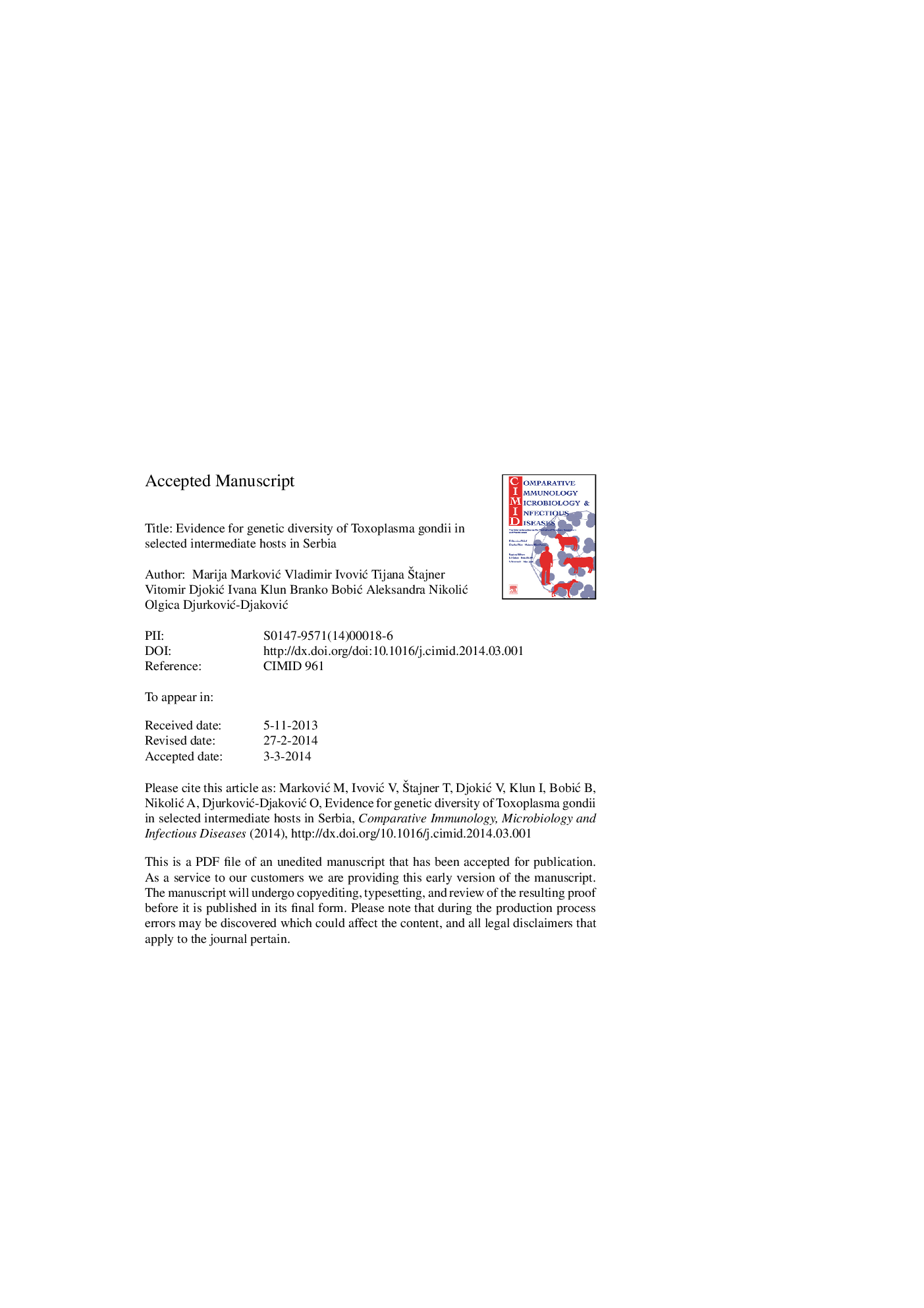| Article ID | Journal | Published Year | Pages | File Type |
|---|---|---|---|---|
| 10971313 | Comparative Immunology, Microbiology and Infectious Diseases | 2014 | 27 Pages |
Abstract
To contribute to the insight into the worldwide population structure of Toxoplasma gondii, we genetically characterized a total of eight strains isolated from intermediate hosts including humans, sheep and pigeons in Serbia. Although parasite DNA was detected in 28.2% (60/213) of the human samples from 162 patients serologically suspected of active toxoplasmosis, as well as in 5/7 seropositive pigeons and in 2/12 seropositive sheep examined, multilocus PCR-RFLP genotyping, using SAG1, 5â²SAG2, 3â²SAG2, GRA6, 5â²GRA7 and 3â²GRA7 as markers, was successful in only four human isolates (of which one was isolated from both the bronchoalveolar lavage fluid and blood samples of a single patient), one sheep and three pigeons. Of the eight isolates, five were type II (62.5%), one was type III, one was atypical, and one had a type I allele at GRA6 as the single locus genotyped. Although type II, as elsewhere in Europe, predominated, these results may suggest a higher genetic diversity of T. gondii in Serbia, reflecting local environmental contamination and also the geographical position of the country in South-East Europe.
Keywords
Related Topics
Life Sciences
Agricultural and Biological Sciences
Animal Science and Zoology
Authors
Marija MarkoviÄ, Vladimir IvoviÄ, Tijana Å tajner, Vitomir DjokiÄ, Ivana Klun, Branko BobiÄ, Aleksandra NikoliÄ, Olgica DjurkoviÄ-DjakoviÄ,
